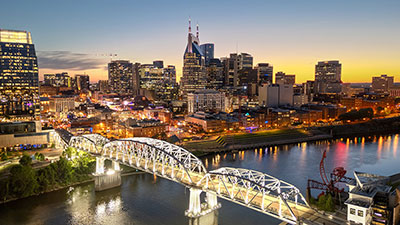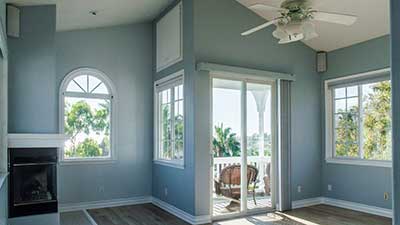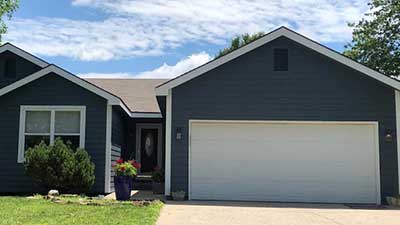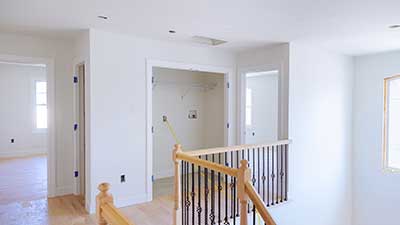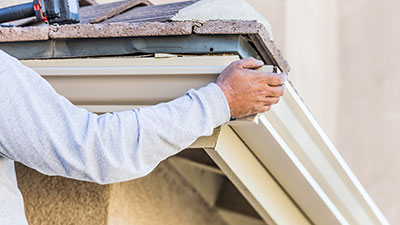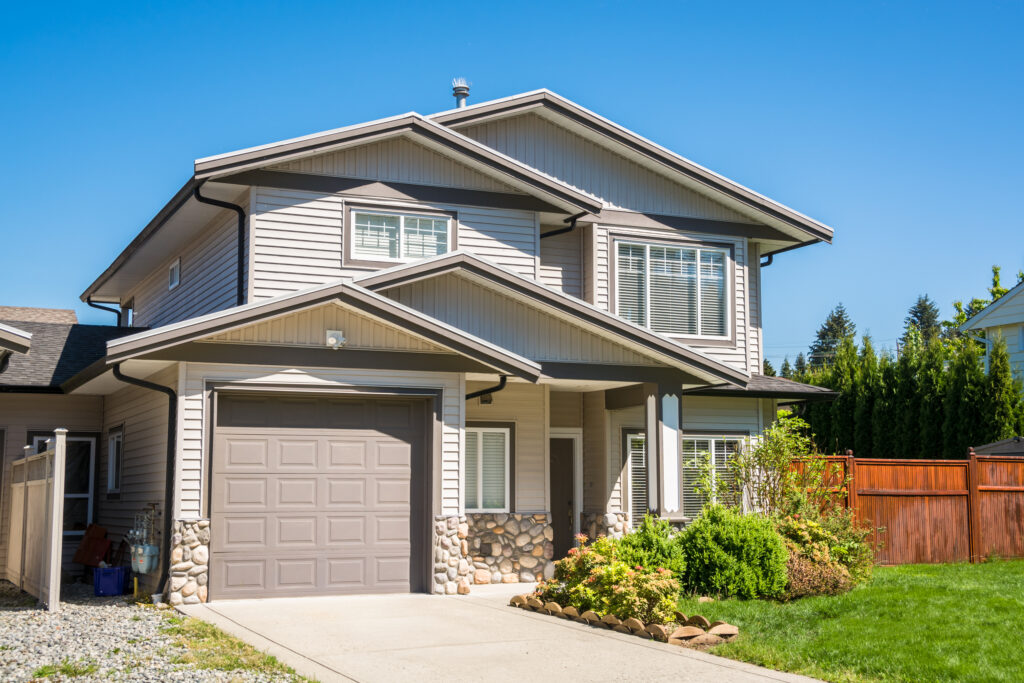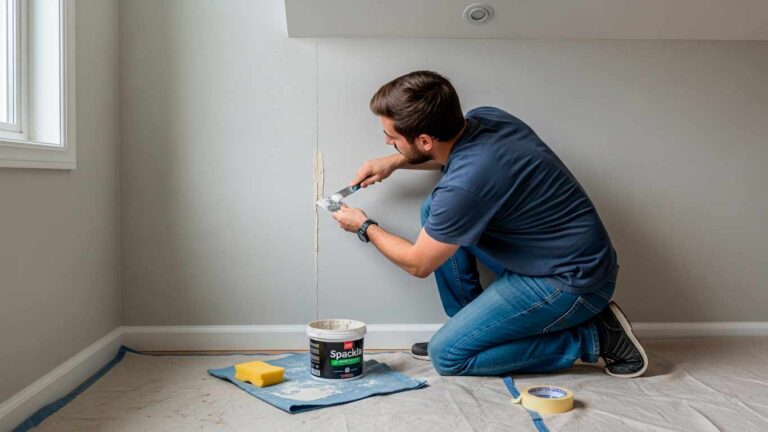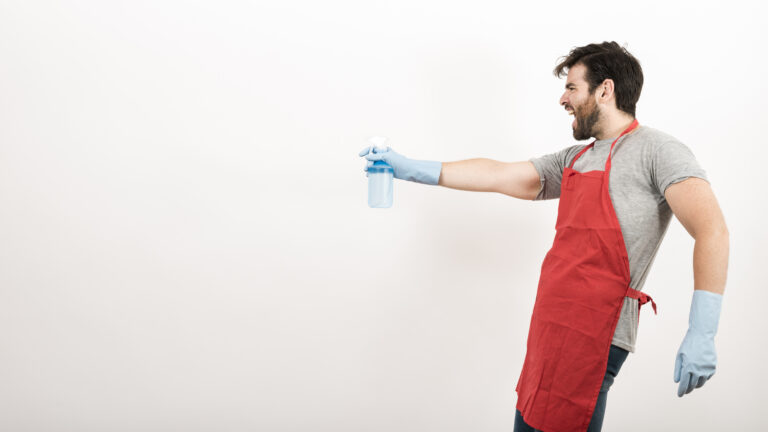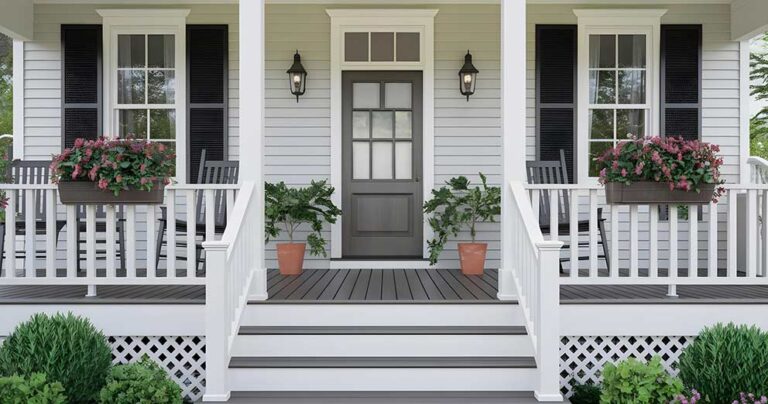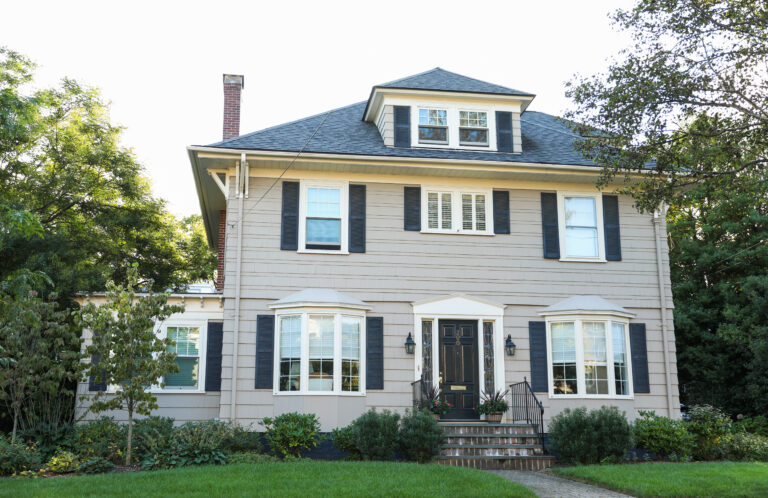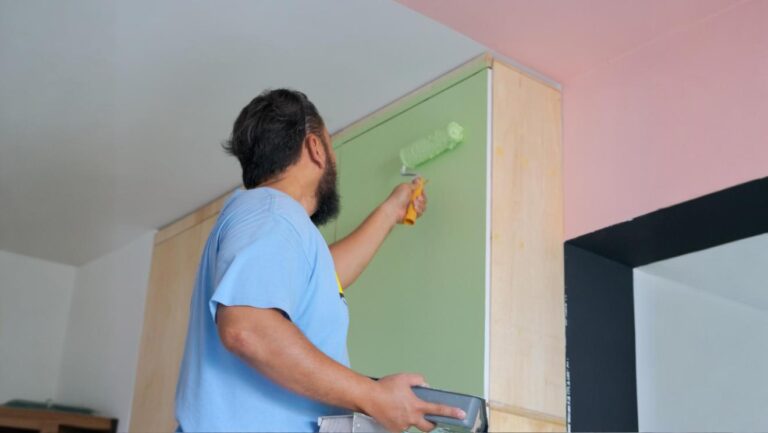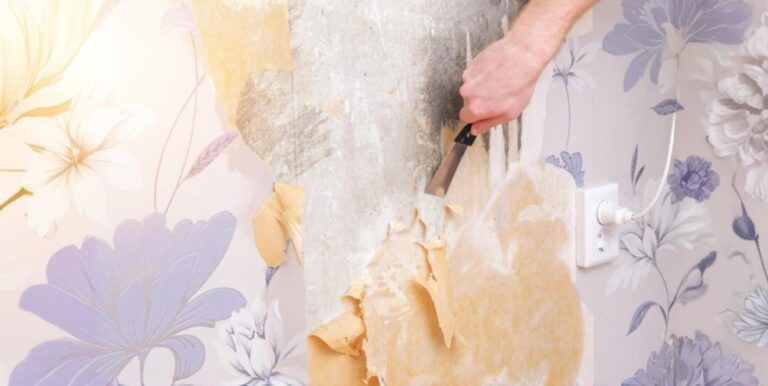Giving your home a fresh exterior paint job is one of the best ways to enhance curb appeal and protect it from the elements. A well-painted exterior not only makes your home look brand new but also acts as a shield against weather damage. While DIY painting can be tempting to save money, keep in mind that painting a house exterior is a big project. It requires the right planning, tools, and techniques. In this guide, we’ll take you through each step of the process, from prepping your home to selecting the right paint.
And if you’re ever in doubt, hiring professional painters, like OnDemand Painters, can ensure a smooth, high-quality finish that will last for years to come.
Get a quote
Key Takeaways
- Proper planning and prep work are crucial to ensuring a smooth and long-lasting paint job.
- Investing in high-quality exterior paint and tools will lead to a more professional finish and fewer future touch-ups.
- Using the right techniques, like working from top to bottom and applying two coats, helps avoid drips and patchy coverage.
- Even the best DIYers can make mistakes, so avoid common pitfalls like painting in poor weather or skipping primer.
- For challenging jobs like multi-story homes, hiring experts like OnDemand Painters guarantees a professional and stress-free result.
- Maintaining a fresh coat of paint through regular cleaning and touch-ups will keep your home looking great for years.
Planning Your Exterior Painting Project
Every successful exterior painting project starts with thorough planning. Jumping into the task without a plan can lead to wasted time, uneven finishes, and even extra costs down the line.
Start by evaluating the surface area you need to paint. Measure the height and width of each wall, and subtract windows and doors to get the square footage that needs paint. For a 1500 sq ft home, you’ll typically be working with around 1200-1400 sq ft of paintable surface, depending on how many windows and doors you have. This gives you an idea of how much paint to buy and helps budget the time needed to complete the job.
Weather Conditions also play a crucial role. Ideally, you want mild temperatures between 50°F and 85°F, low humidity, and no wind. This helps paint adhere better and dry evenly without blistering or cracking. If rain is in the forecast, reschedule to avoid potential delays or ruined results.
Taking these steps ensures you won’t face delays or costly errors, and your paint will last much longer.
Tools and Materials: What You Need to Paint Your House Exterior
To paint a house exterior effectively, you’ll need the right tools and materials on hand. Here’s a comprehensive list to help you prepare:
- Pressure washer: To clean the walls and remove dirt, grime, or loose paint.
- Drop cloths: To protect your landscaping and hardscapes from drips.
- Scrapers and sanders: To smooth out rough surfaces or remove flaking paint.
- Painter’s tape: For crisp lines around trim, doors, and windows.
- Brushes and rollers: High-quality brushes and rollers suited for exterior surfaces.
- Ladder or scaffolding: Make sure it’s safe and sturdy, especially if you’re working on a two-story home.
- Paint sprayer (optional): For faster application, especially on large areas.
Choosing high-quality materials is key to achieving a professional finish. For example, higher-end brushes and rollers offer smoother results and prevent streaking
If you’re considering professional tools like a sprayer, renting might be a cost-effective option for a one-time project.
While gathering your materials is the first step, remember that professionals, like those at OnDemand Painters, come fully equipped with everything needed, allowing you to skip the hassle of buying or renting tools yourself.
Prepping Your House Exterior: The Key to a Lasting Paint Job
Before any paint touches your home’s surface, the prep work must be done. Skipping this step can lead to peeling paint, uneven coverage, and a finish that doesn’t last.
Start by cleaning the house exterior. Use a pressure washer to clear away any dirt, mildew, and loose paint. Make sure the surface is completely dry before moving on to the next step. If your home has wood siding, be particularly cautious as too much pressure can damage the wood.
Next, you’ll need to scrape off any loose or peeling paint. Use a paint scraper to remove flakes, and sand rough spots to create a smooth surface for the new coat. This step is critical for preventing new paint from peeling off too soon.
After scraping, check for cracks or holes in the siding, trim, or around windows. Apply caulk where needed and let it dry completely before painting. Caulking around windows and doors not only gives a cleaner finish but also improves your home’s energy efficiency.
For the best results, apply a coat of primer to the surface. Primer ensures better adhesion and improves the overall durability of the paint work, especially on porous surfaces like wood.
Choosing the Right Exterior Paint for Your Home
Selecting the right exterior paint is just as important as the painting technique itself. The type of paint you choose will affect not only the appearance but also the longevity and durability of the finish.
Here are the main types of exterior paint:
- Latex (water-based) paint: Known for its durability, flexibility, and easy cleanup, latex paint is a popular choice for exterior surfaces. It resists cracking, dries quickly, and holds up well in various weather conditions.
- Oil-based paint: Although oil-based paints offer a smoother finish and are more durable in some cases, they take longer to dry and are harder to clean up. They also tend to become brittle over time, which can lead to cracking
When choosing high-quality paint, make sure to consider factors such as UV resistance, moisture resistance, and color retention. OnDemand Painters recommends premium-grade exterior paint that holds up in extreme weather conditions, helping your home maintain its fresh look for years.
Calculating How Much Paint You’ll Need
Before you buy your paint, it’s crucial to calculate exactly how much paint you’ll need to avoid wastage or multiple trips to the store.
One gallon of paint typically covers about 350-400 square feet with a single coat. So, for a 1500 sq ft house, you’ll need about 10-15 gallons for a single coat, depending on the texture and porosity of the walls. If you’re doing two coats, which is highly recommended for longevity, you’ll need to double that amount
Don’t forget to factor in additional paint for trim and doors, which may require different paint finishes, such as semi-gloss or high-gloss for durability.
Step-by-Step Guide to Painting a House Exterior
With the prep work out of the way and your tools ready, the next step is to dive into the actual painting. While it may seem like a simple task, painting a house exterior requires a methodical approach to achieve a smooth, durable finish. Here’s how you can get started:
Step 1: Start with the Trim
Always begin by painting the trim, doors, and window frames. This is because trim requires more precision, and starting with it allows you to make mistakes (if any) before you cover the larger walls. Use semi-gloss or high-gloss paint for trim, as it is more resistant to the elements and easier to clean.
Step 2: Move to the Large Surfaces
For the larger areas of your walls, use a high-quality roller to ensure even coverage. Depending on the texture of your home’s surface, you may need a 3/4-inch nap roller for rough surfaces like stucco, while a 1/2-inch nap works well on smoother surfaces like siding. Brush the edges and corners with an angled brush for neat finishes and to avoid paint running over edges.
Step 3: Top-Down Application
Working from top to bottom prevents unsightly drips from ruining freshly painted areas. This technique also gives you a more consistent finish across the entire wall. In some cases, especially with textured walls, using a paint sprayer may be more effective than rollers, offering an even finish much faster.
Step 4: Apply Two Coats
To ensure long-lasting protection and even coverage, two coats are almost always necessary. One coat may look fine initially but often leads to early fading, and patchy spots can appear over time, especially in areas exposed to the most sunlight. Waiting for the first coat to fully dry before applying the second is essential for a smooth finish.
Step 5: Details Matter
The final step involves paying attention to the small details like doors, shutters, and decorative elements. For these areas, precision is crucial. If your house has architectural features or intricate trim work, this is where you’ll spend the most time. Consider using painter’s tape to achieve sharp, clean lines, especially around windows and doorways. Be sure to remove the tape while the paint is still slightly wet to prevent peeling.
Following these steps ensures a professional-quality paint job that enhances the look of your home and protects it for years to come.
Common Mistakes to Avoid for a Successful Painting Project
Even the most experienced DIYers can make mistakes when painting their home exterior, and these errors often lead to extra work, unsatisfactory results, or even the need for a complete redo. Avoiding these common pitfalls can help you achieve the best results:
Skipping Surface Prep
One of the most critical mistakes homeowners make is skipping or rushing through the surface preparation phase. Without properly cleaning, sanding, and priming the surface, paint will not adhere correctly and is likely to peel or crack within months. Don’t underestimate the importance of prepping—it’s the foundation of a long-lasting paint job.
Painting in Poor Weather Conditions
Weather can make or break your painting project. Painting during rainy or extremely hot conditions can prevent the paint from curing correctly. High humidity levels can extend drying times, leading to a patchy finish or, even worse, paint bubbling. It’s important to choose dry, moderate weather days to ensure smooth application and quick drying. Additionally, avoid painting during high winds, as dust and debris can stick to the wet paint and ruin the finish.
Not Using Primer
Primer isn’t just for fresh drywall—it’s essential for painting over old surfaces, especially if you’re making a drastic color change or painting over stains and imperfections. Skipping primer can result in uneven paint coverage and premature wear.
Overloading the Brush or Roller
Overloading your brush or roller with too much paint leads to dripping and uneven layers. Instead, use multiple thin layers to build up the color gradually, ensuring even coverage.
By steering clear of these common mistakes, you’ll not only make your job easier but also ensure that your paint job lasts longer and looks more professional.
Budgeting for Your Project: Understanding Exterior Painting Costs
Whether you’re tackling the job yourself or hiring professionals, understanding the costs involved will help you manage your budget and avoid any surprises. Here’s what to consider when planning your exterior painting costs:
Paint Costs
For a 1500 sq ft home, you’ll need around 10-15 gallons of paint for one coat. High-quality exterior paint typically costs between $30 and $60 per gallon. If you opt for two coats, you’ll need double the amount. Be sure to select high-quality paint designed for exterior use, as it will withstand weather changes better and last longer
Tools and Supplies
If you don’t already own tools like ladders, brushes, rollers, or drop cloths, you’ll need to purchase or rent them. This can add several hundred dollars to your total cost. Renting specialized equipment, like a paint sprayer, may be a cost-effective option if you have a lot of surface area to cover. Expect to spend around $200 to $500 on tools and equipment depending on whether you rent or buy.
Primer and Caulk
Adding a coat of primer is essential for achieving even paint coverage, especially if you’re painting over a darker color or repairing damaged surfaces. A good primer typically costs between $25 and $50 per gallon. You’ll also need caulk to seal cracks around windows and doors, which adds to the material cost but is vital for a clean finish and long-lasting paint job.
Professional Labor Costs:
If you decide to hire professionals, expect to pay between $3,000 and $8,000 for a 1500 sq ft home, depending on factors like the complexity of the job, the number of stories, and your location. Hiring professionals offers peace of mind and ensures the job is done quickly and efficiently, with minimal risk of error
Long-Term Savings
While hiring professionals can be a higher upfront cost, consider the long-term savings. Professionals provide warranties, ensuring that you won’t have to repaint or repair peeling paint prematurely. DIY projects, while cheaper initially, can lead to added costs if mistakes are made or the job needs touch-ups within a year or two.
Understanding these costs allows you to make informed decisions and helps you determine whether a DIY approach or hiring professionals is the best fit for your budget and needs.
When to Call the Experts
While DIY painting can be a fulfilling and money-saving project, there are certain scenarios where calling in the experts makes more sense. Hiring professional painters like OnDemand Painters ensures that your project is handled efficiently and with a high level of expertise, especially when dealing with challenges such as:
Multi-Story Homes
Painting a two-story home requires specialized equipment like tall ladders or scaffolding, which can be expensive and difficult to manage without experience. Professionals have the tools and the safety knowledge to work at heights and complete the job swiftly.
Complex Surfaces
Homes with textured surfaces like stucco or masonry require a different approach than smooth siding. Pros know which paints and tools are best suited for these materials, ensuring a flawless finish that won’t peel or crack under pressure.
Time Constraints
Painting an entire house exterior is time-consuming. If you’re short on time or have a tight schedule, hiring a professional ensures the job gets done on time and with fewer disruptions.
Professional painters also offer the added benefit of warranties, meaning if anything goes wrong, it’s covered. In the long run, you could end up saving both time and money by having the job done right the first time.
Maintaining a Fresh Coat of Paint on Your Home
Once your home’s exterior has a fresh coat of paint, the job isn’t over. Regular maintenance is essential to keep your house looking great and to extend the life of the paint. Here’s how you can maintain your home’s new look:
Regular Cleaning
Over time, dust, dirt, and mildew can accumulate on your home’s exterior, especially in humid climates. Cleaning the exterior with a garden hose or pressure washer once or twice a year will help keep the paint looking fresh. Be careful when using a pressure washer, as too much pressure can damage paint on certain surfaces like wood siding.
Inspect for Peeling or Cracking
It’s a good idea to inspect your house at least once a year for any signs of peeling, cracking, or fading paint. Areas that are most exposed to the elements, like south-facing walls, are more prone to damage. Spot repairs are easier and cheaper than a full repaint, so addressing problems early on is key.
Touch-Up Paint
Keep a small amount of leftover paint for touch-ups. This will come in handy when fixing small areas that may have chipped or worn out due to weather conditions. Touch-ups not only extend the life of your paint job but also keep your home looking well-maintained.
Reapply Caulking
Caulking around windows and doors tends to deteriorate faster than paint, so it’s important to check and reapply caulk as needed. This prevents moisture from seeping into your home, which could lead to more significant structural damage down the line.
By maintaining your home’s exterior, you can avoid the need for frequent repaints and ensure your home continues to look beautiful for years to come.
Conclusion: Ready to Tackle Your Exterior Painting Project?
Painting the exterior of your home is a big but rewarding project. Whether you decide to DIY or hire professionals, the key is proper preparation, high-quality materials, and the right techniques.
FAQs
How many gallons of paint do I need to paint a house exterior?
To paint a house exterior, you’ll typically need around 10-15 gallons for a 1500 sq ft home with a single coat. Larger homes or rough surfaces like vinyl siding or metal siding may require more, and if you’re applying two coats, you’ll need to double the amount.
What are the average exterior house painting costs?
The average exterior painting cost for a 1500 sq ft home ranges between $3,000 and $8,000. Exterior house painting costs depend on factors like house size, surface type (such as vinyl siding), and whether you’re painting trim or using professional painters.
How do I calculate paint coverage per square foot?
To calculate paint coverage, multiply the height and width of each wall to find the total square footage. Subtract the square footage of windows and doors. One gallon of paint typically covers about 350-400 square feet per coat, so adjust for multiple coats or rougher surfaces.
What is the cost to paint trim on a house exterior?
The cost to paint trim can vary, but it often adds an additional $500 to $1,500 to the total exterior house painting costs. Trim paint requires more precision, and higher-quality trim paint like semi-gloss or high-gloss is often recommended for durability.
Can I paint vinyl siding, and what does it cost?
Yes, vinyl siding can be painted, but it requires high-quality exterior paint that is designed to adhere to vinyl. The cost to paint vinyl siding can be slightly higher due to additional prep work, usually ranging between $1.25 to $3 per square foot.
Should I hire a professional painter for exterior house painting?
Hiring a professional painter ensures that your home’s exterior is painted efficiently and with high-quality results. For larger projects like painting metal siding or multi-story homes, pros are worth considering to save time and avoid mistakes. The cost to paint with a professional includes labor and materials, which can reduce long-term maintenance costs.
How much does it cost to paint a house exterior, and how many gallons will I need?
The cost to paint house exterior can range from $3,000 to $8,000 for a 1500 sq ft home, depending on factors like surface type and whether you hire professionals. For a single coat, you’ll typically need around 10-15 gallons of paint, though rough surfaces or multiple coats will require more.





